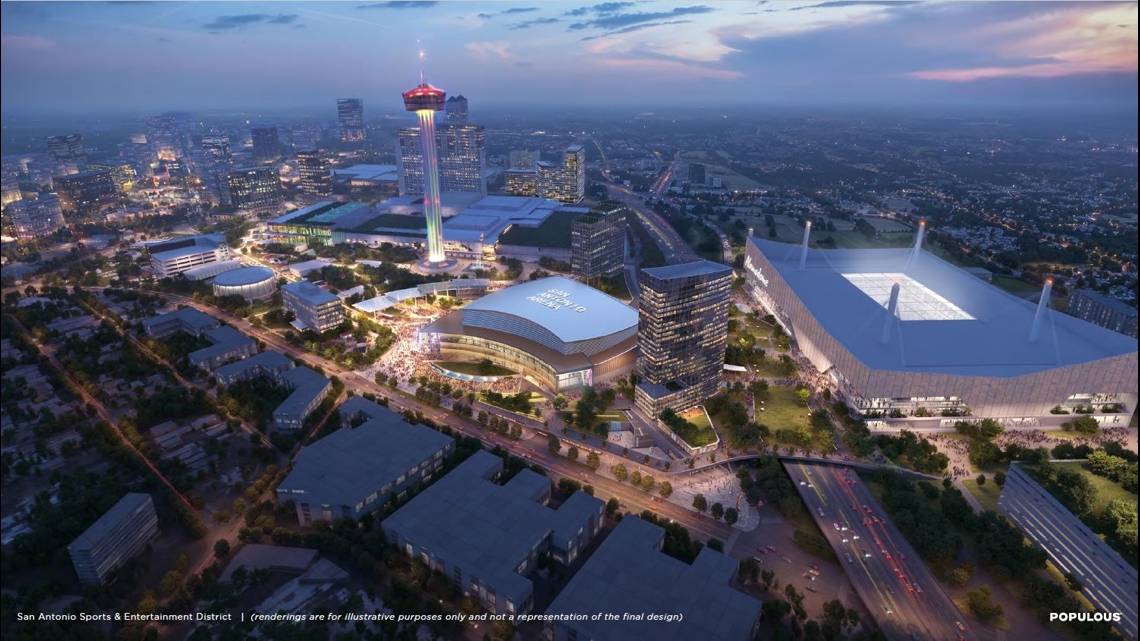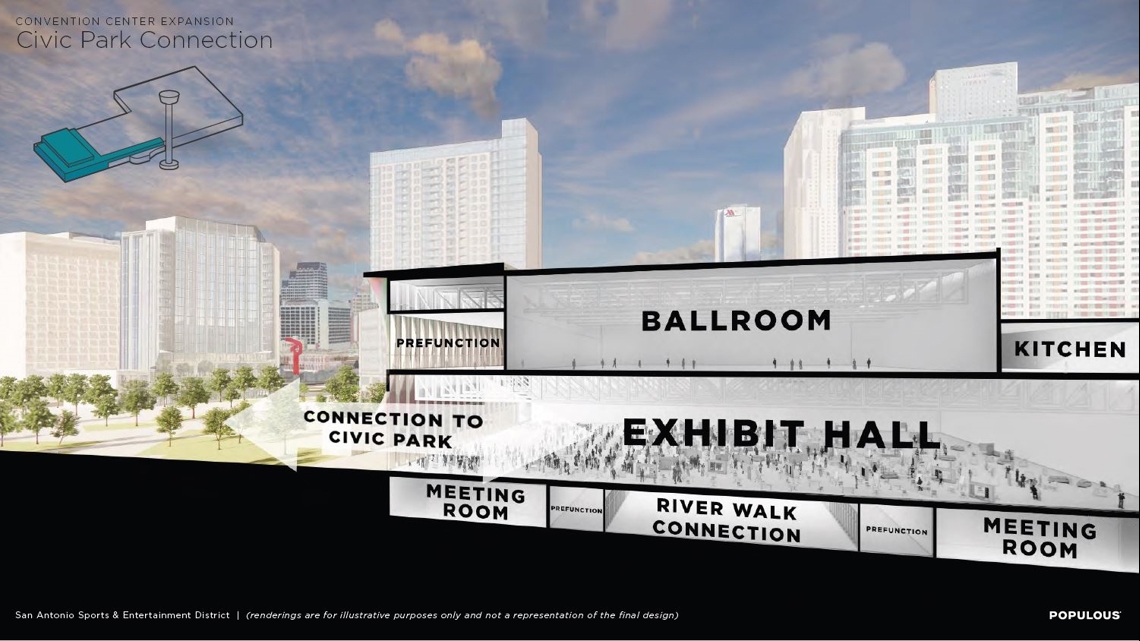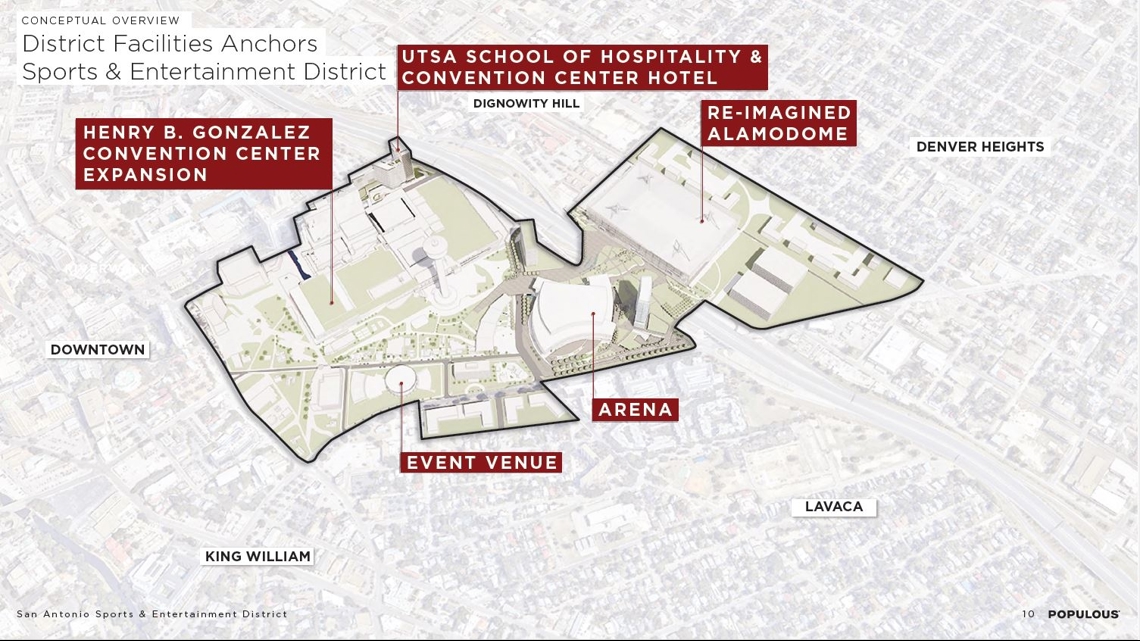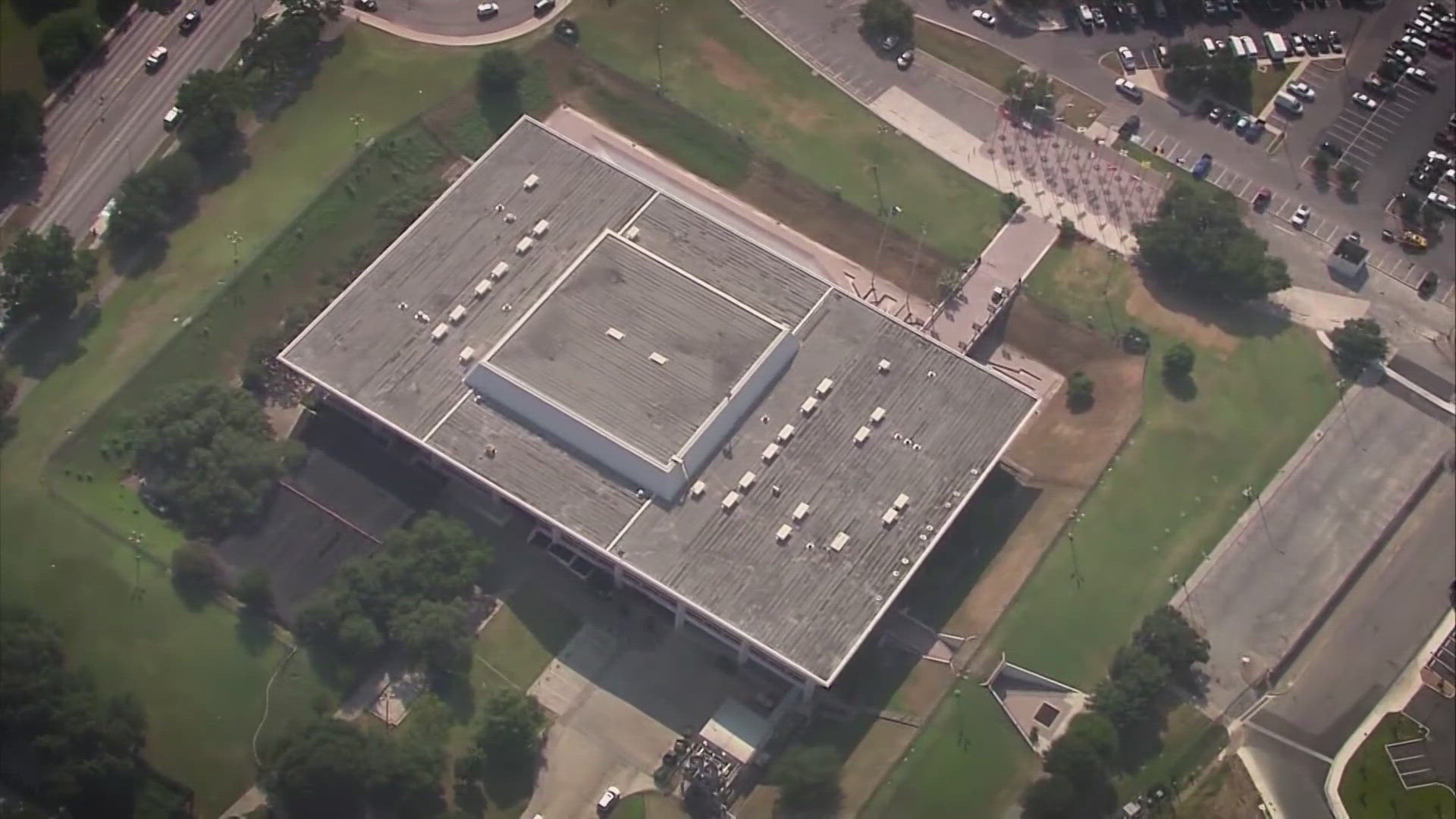SAN ANTONIO — Anyone who has visited downtown San Antonio in recent months has noticed it for themselves: Construction cranes shadowing parts of the city’s core as new hotels are built, an Alamo museum is developed and the full scope of Civic Park slowly comes into view.
It turns out all those orange barrels and barriers may just be a precursor for what’s to come.
On Thursday morning, City Council members will receive their first public briefing on a massive “gamechanger” of a sports and entertainment district initiative that would reshape downtown while growing the Henry B. Gonzalez Convention Center, breaking ground on a new Spurs arena near Hemisfair, and rejoining downtown with the east side via open, walkable activity space built over Interstate 37.
City officials are approaching the overarching transformation as one comprising multiple individual projects, they said in a media briefing Wednesday. The work up to this point has been in the realm of strategy and not implementation, and while no specific price tags will be presented to City Council on Thursday, officials expect it to be in the scope of billions of dollars rather than millions.


“We have a lot of work to do, but it is an exciting vision,” City Manager Erik Walsh said. “I think we have a once-in-a-lifetime opportunity with a lot of assets that are in a critical spot of downtown.”
While the city says it’s been talking with Bexar County and the Spurs about the potential for a new arena since spring 2023, discussions about a sports and entertainment area go back further, according to officials. At this point, the top priority is growing the convention center, while planning for a new hotel to accommodate events there.
But there are several other “anchor” projects that encompass the district, including converting the federal courthouse in Hemisfair into a live entertainment venue and modernizing the 64,000-seat Alamodome to make San Antonio more competitive in bids for marquee events like the College Football Playoff and NCAA Final Four.
The latter is at least partially at the NCAA’s request. City officials say the association has notified them that Alamodome improvements like suites, VIP seating and “premium lounge space” are necessary. Renderings provided by the city, while not indicative of final designs, tease a major makeover for the oft-ridiculed east-side facility, turning it into a sleeker, futuristic version of itself.


“As a taxpayer, I don’t want us to see us continue to throw tens of millions of dollars in a facility unless we’re going to be competing for top-tier events,” Mayor Ron Nirenberg said Wednesday.
San Antonio’s dialogue with the NCAA isn’t the only collaboration the city has sparked in the still-nascent stages of its plan.
Officials say they have hired Populous, an urban design masterplanning company, to help envision the future of the convention center and Alamodome. The city is also in the process of working with the federal government to officially acquire the courthouse, and plans to use at least some of the $2.96 million accepted as part of the Reconnecting Communities Grant this year to fund planning for a large land bridge over I-37.
It also, earlier this year, acquired the option to lease and/or sell the 13.9-acre parcel of land that the Institute of Texas Cultures currently sits on. Officials say it will have to be razed if a Spurs arena is to rise in its place.
In the midst of those headlining projects are other efforts like establishing required utilities and roads, and bolstering the district’s potential with retail and mixed-use development across roughly 50 acres.


“In my mind, all of these different things happening together presents a huge opportunity for San Antonio,” Nirenberg said. “If we’re working together to get this right, it would be a gamechanger if these things come to fruition.”
But for all bricks that have been laid so far, city officials emphasize it’s still too early to circle dates on the calendar for groundbreaking ceremonies. Thursday’s City Council briefing represents the start of the public engagement stage, as well as formulating the framework of a memorandum of understanding with the Spurs and county, and kick-starting conversations on potential funding streams.
Those streams could be diverse, Assistant City Manager Lori Houston said, and are in fact expected to be given each individual anchor project would have its own source of funding. The options range from private sources, general obligation bonds, or hotel and rental car taxes, for instance—some of which would have to be approved by voters.
A peek around the country gives a clearer idea of how high the overall price tag might go. These days, new NBA arenas typically cost upwards of $1 billion. In St. Petersburg, Florida, leaders are mulling over a multibillion-dollar redevelopment that includes a new home for the Rays. Houston’s mayor wants to spend $3 billion, albeit over a much longer timeline, to breathe life into downtown. And in the Dallas area, construction could start in just a few weeks on a 166,000-square-foot sports venue that will be the centerpiece of a $1.5 billion sports and entertainment district.
“We have no estimated dollar amounts. But they’re all big,” Walsh said. “As we generate cost estimates, we’re going to bring them piece by piece to the council. All of it is not happening at once.”


To wit, general timelines vary at this point, too. Walsh estimates project timelines of one to five years for everything west of I-37 – including the land bridge dream – and of anywhere from six to 15 years for the Alamodome and other development on the east side.
Regardless of the extent to which those estimates will eventually change with time, Thursday’s public conversation comes at a period of change for San Antonio. The airport is in the midst of its own $2.5 billion upgrade in the form of a new terminal; popular areas like The Rim and the Pearl are consistently welcoming new businesses; and a local organization is working to establish the country’s first Mexican American civil rights museum.
Nirenberg includes the city’s workforce development and housing efforts among those changes.
“The reason why the time is now for a concept like this, and the reason why I believe private investment is interested in San Antonio like they haven’t been before,” the mayor said, “is because we have been making strategic investments in this community that make us, fundamentally, a good place to invest.”

